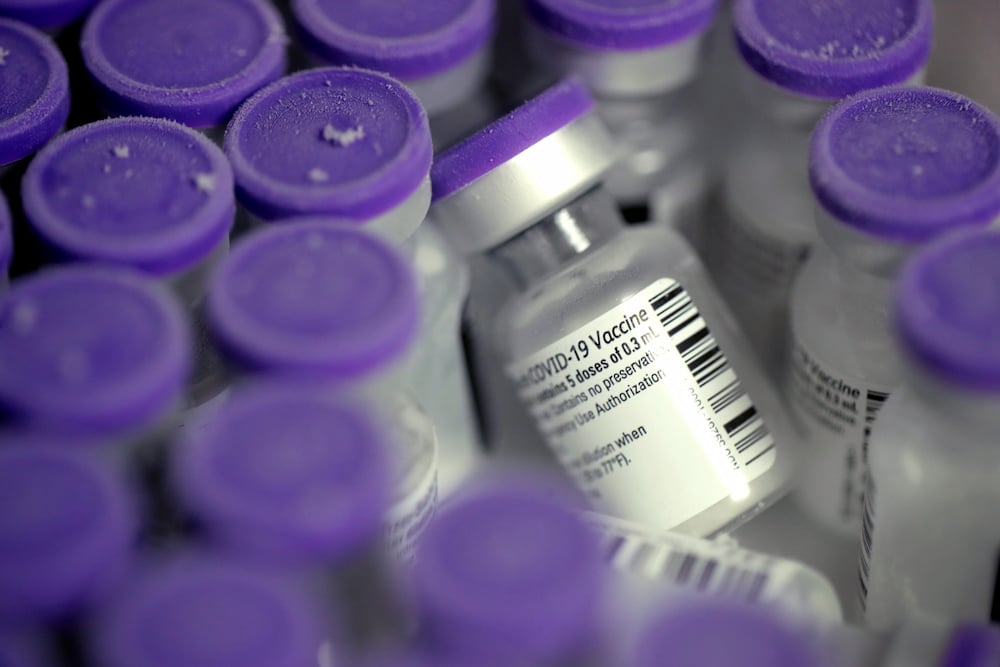Four thousand Canberrans will be among the first in Australia to receive the Pfizer BioNTech coronavirus vaccine once supplies reach the ACT next week – but most Canberrans will not be eligible for vaccination until mid-year.
The ACT will take a phased approach to vaccination in line with the national rollout, ACT Chief Minister Andrew Barr said today, Monday 15 February. Those in the priority group (Phase 1a) include quarantine workers and more than 3,500 frontline health workers, while the Commonwealth Government will simultaneously vaccinate residents of disability and aged care facilities.
These people are most likely to be exposed to the risk of COVID-19 transmission, Rachel Stephen-Smith, Minister for Health and Community Services said.
The second phase in March will include elderly people, Indigenous people over 55, people with a medical condition or disability, healthcare workers, and critical and high-risk workers (defence, police, emergency services).
“Healthcare and quarantine workers play a vital role in our response to COVID-19, protecting the health and safety of Canberrans throughout the pandemic,” Ms Stephen-Smith said. “By prioritising the vaccination to these Canberrans first, we can ensure that they can maintain our public health response without putting their own health at risk.”
The wider population – including politicians, Mr Barr acknowledged – will not be vaccinated until July. The ACT Government promised to keep the community informed throughout the rollout, working with community organisations and healthcare providers to ensure all Canberrans know when and how they can access the vaccine.
“This process will be one of the biggest logistical challenges the nation has faced in living memory,” Mr Barr said.
“There are many operational and communication challenges that every government in Australia faces in safely providing the vaccine to the entire population in the face of global supply issues. It’s a process that is going to take some time.”
The ACT Government intends to administer 1,000 vaccinations a week. At first, the vaccinations will be given at the COVID-19 Surge Centre in Garran, which also contains a separate testing facility.
As the government obtains more, vaccines will be administered through general practices, GP respiratory clinics, Aboriginal controlled community health services, and ACT Government-run vaccination clinics.
The vaccines will be free. The ACT Government has budgeted $19 million for the vaccination program (plus $4.5 million in capital funding).
Canberra Health Services will also vaccinate Emergency Department staff at Yass and Queanbeyan District Hospitals.
Until vaccination is widespread, Mr Barr urged Canberrans to continue their COVID-safe behaviours, including using the Check In CBR app (downloaded by more than 335,000 people).
More information is on the COVID-19 website at www.covid19.act.gov.au/vaccine.
| Phase | Commencement | Priority population group |
| 1a | Late February 2021 | Quarantine and border workers (including border force, airline staff, defence, police, transport and hotel staff) Health care workers working in high-risk exposure and transmission areas, like COVID-19 testing clinics, respiratory clinics, and some emergency department staffCOVID-19 testing staff, including GP respiratory assessment clinics and Winnunga Nimmityjah Aboriginal Health and Community Services Pathology staff working directly with COVID-19 Emergency Department staff – Canberra Health Services, Calvary Public Hospital Bruce, Yass District Hospital, and Queanbeyan District Hospital ICU and Critical Care staff – Canberra Health Services, Calvary Public Hospital Bruce, National Capital Private Hospital, Calvary John James Hospital Relevant ACTAS staff Staff working in designated COVID-19 wards at Canberra Hospital and Calvary Public Hospital Bruce Residents and staff of aged and disability residential care facilities |
| 1b | March 2021 | Adults aged 70 and over Other health care workers Aboriginal and Torres Strait Islander people over 55 years Adults with an underlying medical condition, including those with a disability, who did not receive a vaccine under phase 1a Critical and high-risk workers including defence, police, fire, emergency services, and meat processing |
| 2a | May 2021 | Adults aged 50–69 years Aboriginal and Torres Strait Islander people aged 18–54 Other critical and high-risk workers |
| 2b | July 2021 | Remaining adult population Catch up for any unvaccinated Australians from previous phases |
| 3 | September 2021 | People 16 years and younger (if recommended) |
For more news:



